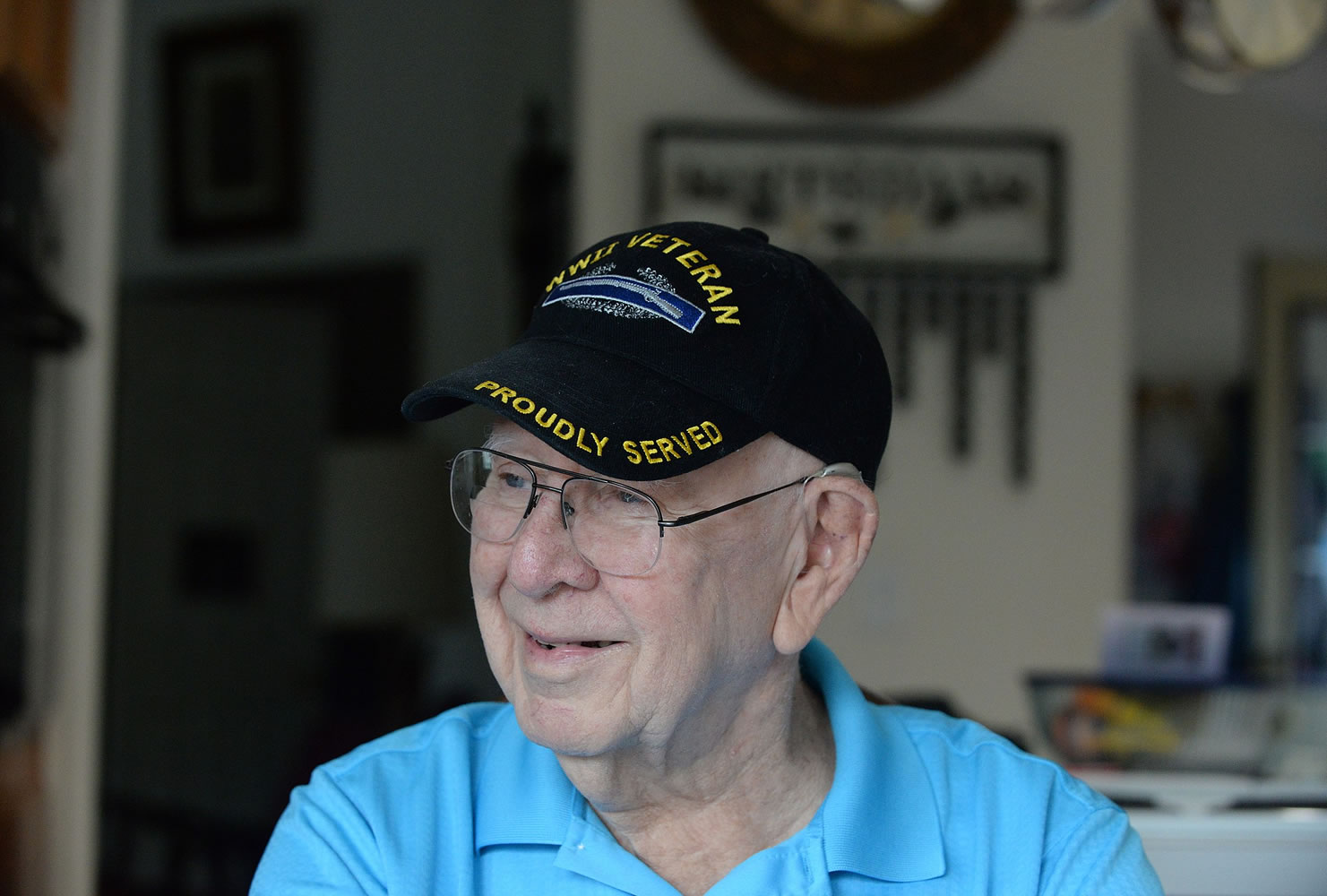Most of us have viewed the scene hundreds of times: doctors and nurses running to meet a helicopter that’s delivering a wounded soldier to an Army field hospital.
It’s part of the opening title shot for the TV series “M*ASH” — first seen in 1972 and still being broadcast on nostalgia networks.
Bernie Hulse witnessed one of the roots of that iconic scene in 1945, although he saw its elements — including those nurses — from quite a different perspective.
Hulse shared his World War II experiences with Columbian readers on Aug. 9, explaining his role as a seagoing soldier in a secret project dubbed Operation Ivory Soap.
His Liberty ship was part of a fleet that served as floating aircraft repair shops in the Pacific. Their equipment included helicopters that could ferry huge aircraft components, including engines for B-29 bombers, from the ship to repair sites on island landing strips.
“We had three helicopters when we left Mobile (Ala.),” said the former radioman. “Halfway between the Panama Canal and Hawaii, they decided to practice takeoffs and landings off of the deck.
“I was on watch in the radio shack when I heard this noise. I opened the porthole and looked out in time to see the helicopter come over the port side of ship. The engine started to sputter and cough, and it rolled over on the starboard side and hit the ocean, and the rotors bent 90 degrees.
“We were technically in dangerous waters, and the captain would have been justified to go on. He ordered the engines to stop. A ship that size, it’s about 2 miles before it actually stops. They got a lifeboat down,” he said.
A gun crew had a better view of the crash site, so they kept the barrel of their gun pointed at the two men who were floating in their life vests.
“They picked up the pilot and his passenger, who appeared to have been knocked unconscious. It was remarkable they got them back. We were about as far from land as you can get,” Hulse said.
‘Dust-off’ debut
Later in the war, some of those ship-based helicopters became improvised air ambulances. They were credited with evacuating at least 70 wounded soldiers from jungle combat zones in the Philippines.
That was five years before the Korean War, which was portrayed in “M*ASH.” They were followed by the Vietnam War’s “dust-off” medevac flights.
The helicopters on Hulse’s Liberty ship never did take part in that sort of lifesaving mission, he said.
“The main use was flying nurses out to the ship to have dinner.”
Off Beat lets members of The Columbian news team step back from our newspaper beats to write the story behind the story, fill in the story or just tell a story.




